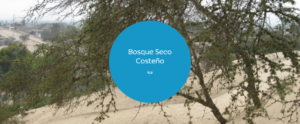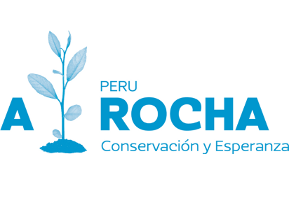Reforestation of the Prosopis Dry Forest Project in Ica (2009 – 2013)

This successful project was developed over a 4 year span, between March 2009 and April 2013, with the objective to restore dry forest relicts in Ica, southern Peru. This project was developed conducting reforestation activities with Huarango (Prosopis sp.) and other native species, engaging local populations, educational institutions, churches and other organisations in a highly participatory manner. Our project had four components: reforestation, environmental education, working with local people and research.
Reforestation
We have carried out cultivation activities in two nurseries, the Nueva Vida nursery and the Botany and Ethnobotany program nursery of the Science Department at the Universidad Nacional San Luis Gonzaga (San Luis Gonzaga National University). With this project, we have been able to plant 24.733 Huarango seedlings (Prosopis spp.) and other native species such as tecoma or cahuato (Tecoma fulva), toñuz (Pluchea chingoyo), palo verde (Parkinsonia aculeata), with an approximate 61% survivial rate in 13 communities (Yaurilla, La Venta, La Expansión de Guadalupe, Nueva Esperanza, Caserío San Martín de Porras, Punta Hermosa, Fonavi, Samaca, Villacuri, Ocucaje, Parcona, Pisco, VIlla María del Triunfo e Ica).

Environmental Education
This project included the implementation of an environmental club and children´s nursery called “Tierra de los niños felices” (Land of the happy children). This resulted from working in collaboration with the Asociación para la Niñez y su Ambiente (ANIA) (Asociation for childhood and the environment) and the mother’s club Andrés Avelino Cáceres, with the purpose of getting local children to participate in caring for the dry forest. We trained 5 children with leadership and organisational skills working within Christian values, and we were able to reach 60 local children through the activities associated with the implementation of the children’s nursery.
We also carried out awareness and training programs for teenagers and university students. Our environmental education activities reached close to 350 students from universities and secondary education through our talks and workshops. In addition, we trained 7 interns and thesists on working within nurseries, planting, monitoring and management. They led and trained a group of 50 student volunteers.

Working with Local People
The success of the project is due in part to the participation and commitment of the local people. Close to 100 people from different neighbourhoods benefited from our workshops and talks. During the project, we were able to work with three churches who engaged their members in the different activities and who also benefited from the talks on creation care. We worked with different local organisations such as the Junta de Usuarios de Agua Potable de San Martin de Porres (association of drinkable water consumers of San Martin de Porres) and the Vaso de Leche Andrés Avelino Cáceres, carrying out two campaigns directed at children and families during the holiday season.

Research
Within the research component, we collaborated with the execution of two thesis, obtained 7 internship reports and other reports on the evaluations of flora and fauna elaborated by our university volunteers in the reforestation areas.

